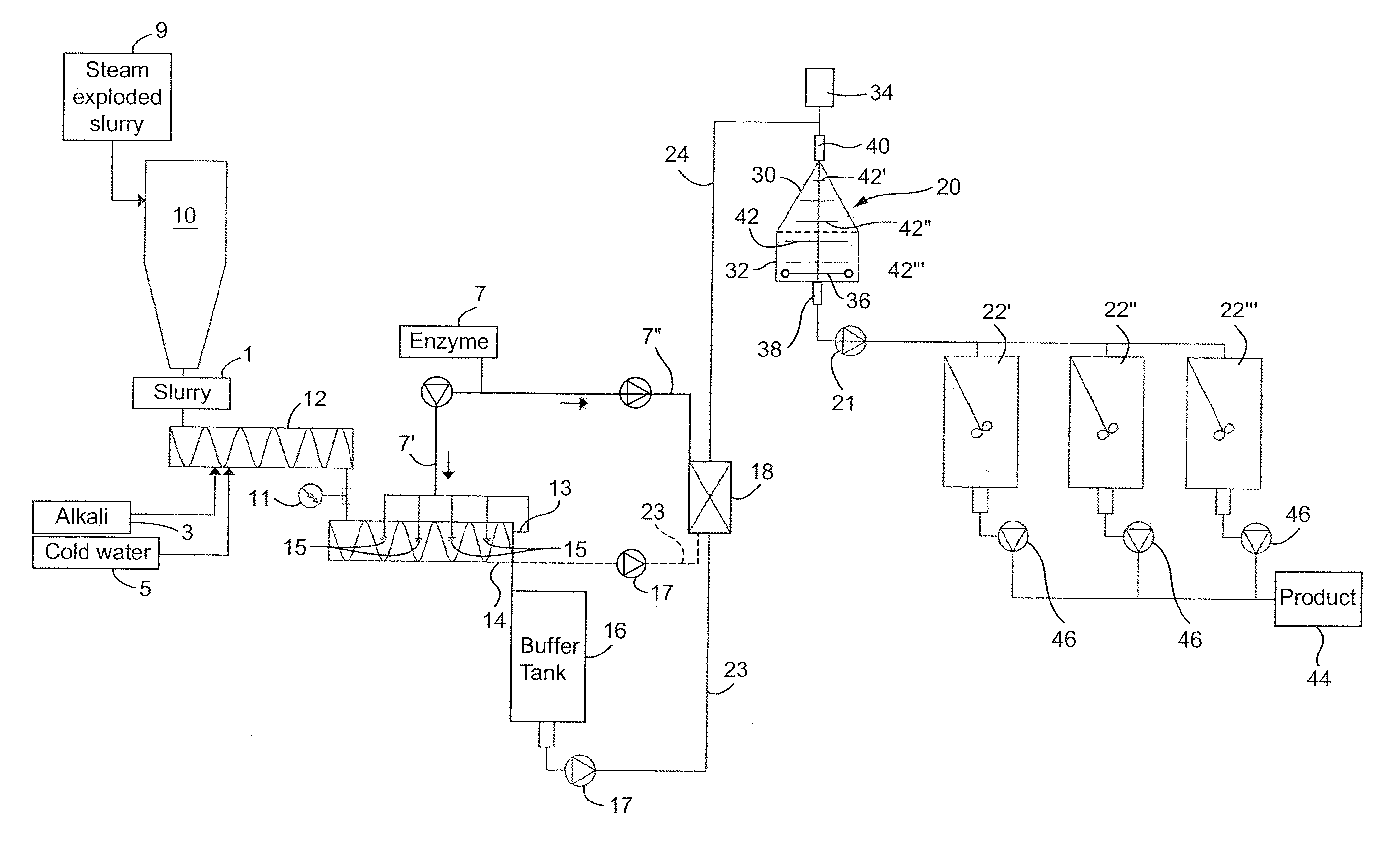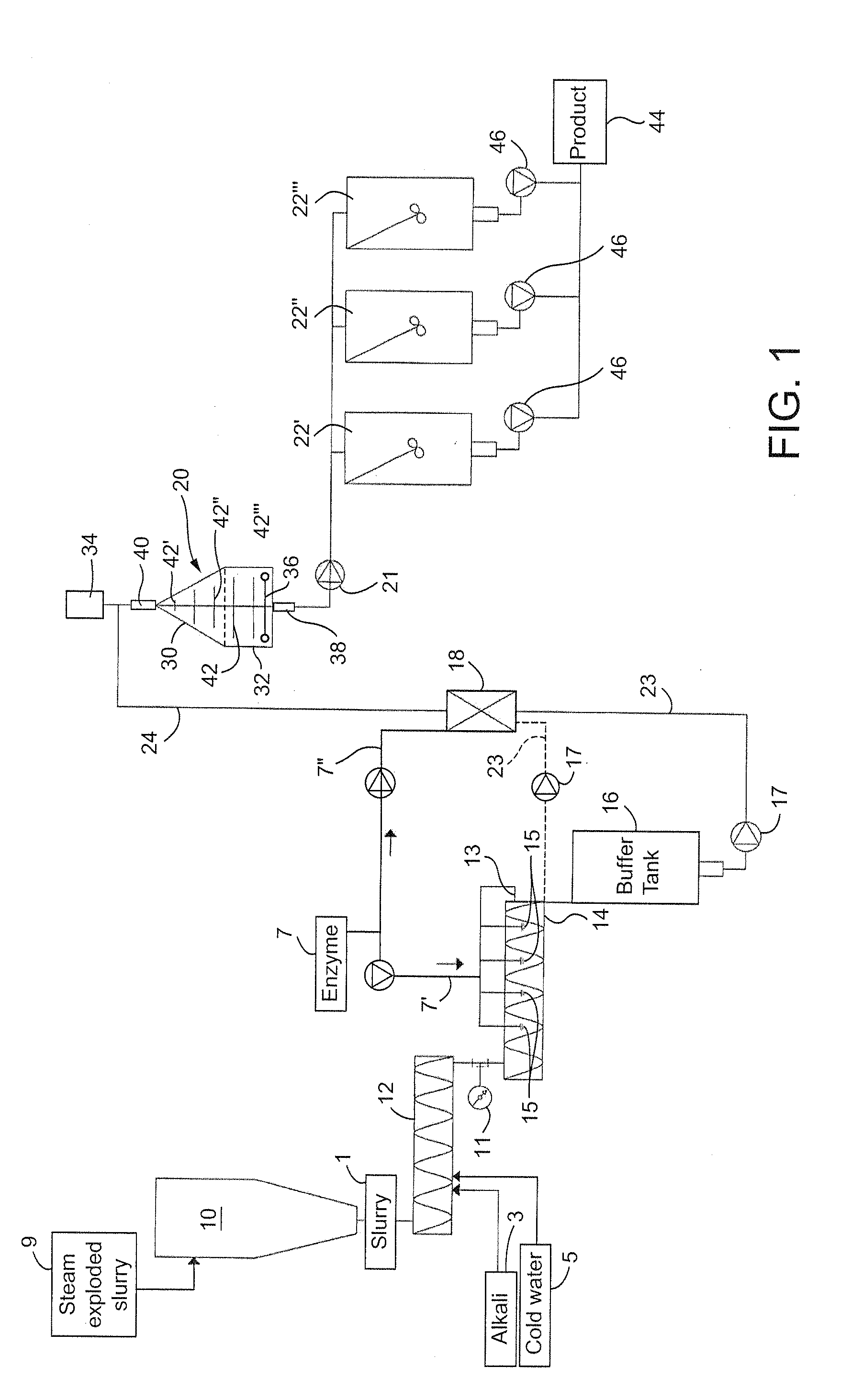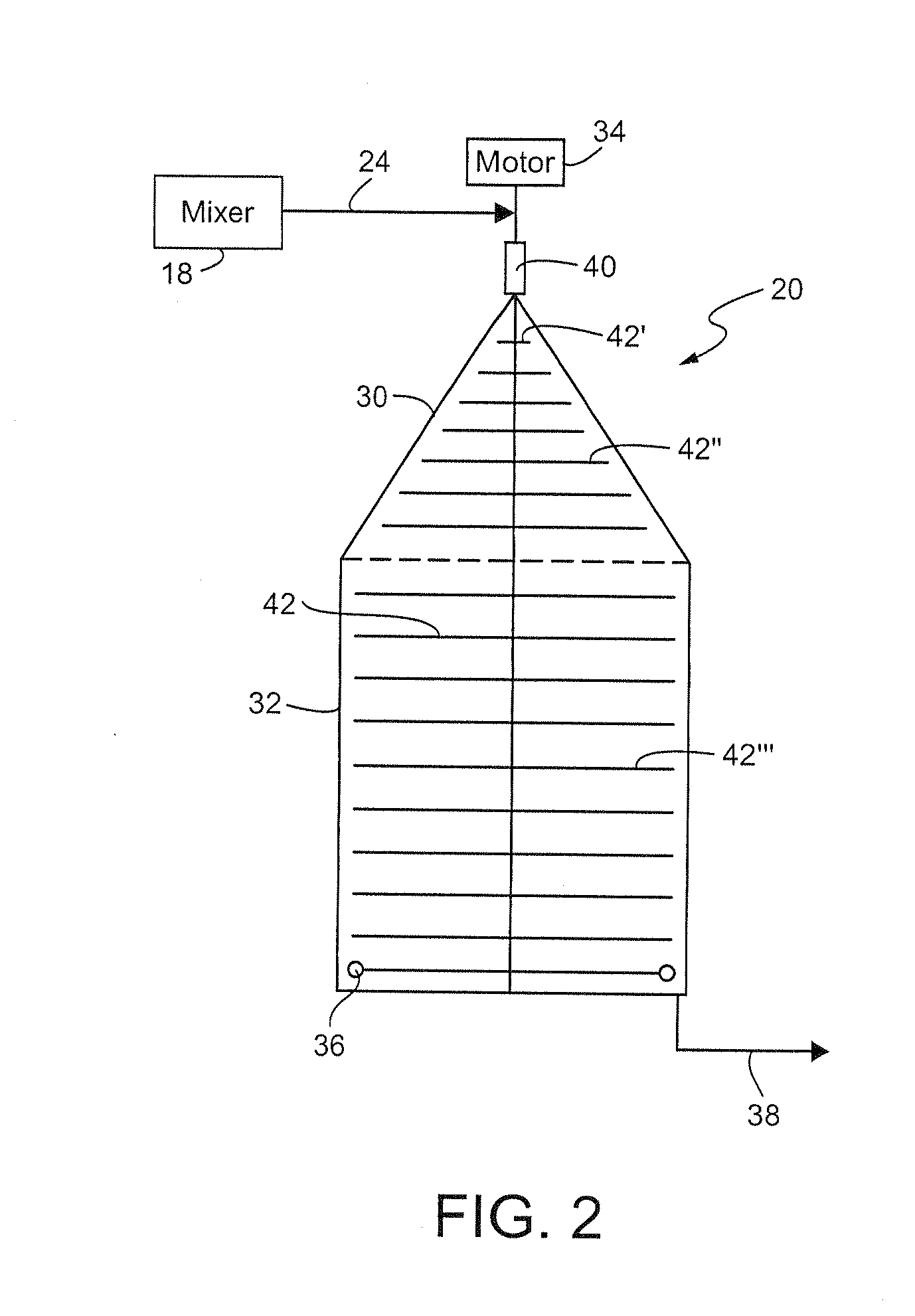Method and apparatus for mixing a lignocellulosic material with enzymes
a technology of lignocellulosic material and enzyme, which is applied in the field of enzyme conversion of lignocellulosic material to monomeric sugar, can solve the problems of high price and powerful impeller, liquefaction of lignocellulosic material may require several hours of mixing, and additional mixing volume is required, and achieves high flow capacity
- Summary
- Abstract
- Description
- Claims
- Application Information
AI Technical Summary
Benefits of technology
Problems solved by technology
Method used
Image
Examples
Embodiment Construction
[0018]The invention disclosed herein may be used in a process to derive, produce or extract simple compounds from wood, pulp, fiber, and the like, for use in other applications such as the production of fuel, including ethanol gas. In other embodiments, the invention may be applied to decrease the viscosity of viscous, cellulose-containing material to facilitate transport of the material for other processes. Further, the invention may be embodied to extract monomers of certain compounds from cellulose-containing materials, such as lignocellulosic materials. In addition, the invention may be applied to enzymatically hydrolyze pretreated lignocellulosic materials in order to produce monomeric sugars.
[0019]Enzymatic hydrolysis on lignocellulosic materials is challenging, especially with respect to the interactions between the enzymes and the lignocellulosic materials (and its derivatives), and due to the physical characteristics of the fibers, the monomeric / oligomeric mixture, e.g., sl...
PUM
| Property | Measurement | Unit |
|---|---|---|
| temperature | aaaaa | aaaaa |
| temperature | aaaaa | aaaaa |
| temperature | aaaaa | aaaaa |
Abstract
Description
Claims
Application Information
 Login to View More
Login to View More - R&D
- Intellectual Property
- Life Sciences
- Materials
- Tech Scout
- Unparalleled Data Quality
- Higher Quality Content
- 60% Fewer Hallucinations
Browse by: Latest US Patents, China's latest patents, Technical Efficacy Thesaurus, Application Domain, Technology Topic, Popular Technical Reports.
© 2025 PatSnap. All rights reserved.Legal|Privacy policy|Modern Slavery Act Transparency Statement|Sitemap|About US| Contact US: help@patsnap.com



